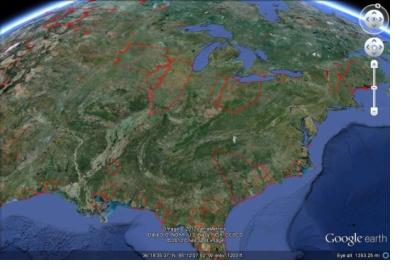United
Nations
Office for Outer Space Affairs
UN-SPIDER Knowledge Portal
For years now, Google has produced a special network link file that shows the latest imagery that has been added to Google Earth. Each time they push out fresh imagery, the network link is updated (usually 2-3 days later) to show you exactly where the new imagery can be found. To see it for yourself, just grab their KML file [Google Earth File - You must have GE installed] and look for the areas outlined in red. Another thing to keep in mind is that the newest imagery is sometimes hidden in the "historical imagery" feature. This occurs when Google captures updated imagery for an area, but decides that the existing imagery is better (sharper, better coloring, etc). They still want to post the fresh imagery for users to find, but leave the better looking imagery on the default layer.
